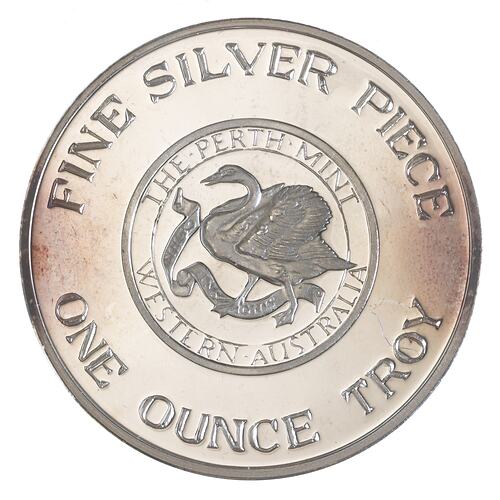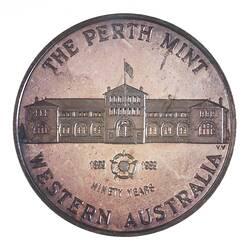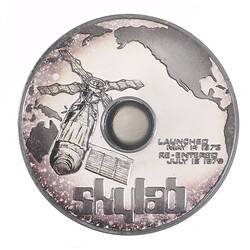During the 19th century branches of the Royal Mint in London were established in the Australian colonies to refine gold from the gold rushes and to mint gold sovereigns and half-sovereigns for the British Empire. The Sydney branch opened in 1855, the Melbourne branch in 1872 and the Perth branch on 20 June 1899.
In the early 1880s, before the gold rushes, the population of Western Australia was only 48,000. By 1900, it was 180,000. There was very little money available in Perth for which the miners could exchange the gold they found or to pay for the goods and services needed by the population.
The then Premier of Western Australia, Sir John Forrest, asked the British Government to establish a branch of the Royal Mint in Perth, suggesting that it could refine gold from the Eastern goldfields and to mint it into British gold coins to be used as currency in the colony. Forrest laid the foundation stone of The Perth Mint in 1896. The Mint was designed by George Temple Poole of the Public Works Department, who was also responsible for a number of elegant colonial buildings in Perth. The limestone used for the building was quarried at nearby Rottnest Island.
The Perth Mint remained under the jurisdiction of Britain until 1 July 1970, when it became a statutory authority of the Government of Western Australia. It remains a State institution, though the Sydney and Melbourne mints ceased to operate long ago. Today The Perth Mint continues to function, and is one of the oldest Mints in the world still operating from its original premises.
Throughout its history the Perth Mint has fulfilled the dual roles of precious metal refining and coining. In its first 100 years of operation, the Mint's refined fine gold output totalled 4,500 tonnes. The refinery operated at the original Hay Street, East Perth, premises from 1899 until 1990, when it was moved to Newburn, adjacent to Perth's International Airport.
By the time minting of gold coinage ceased in 1931, the Perth Mint had issued over 106 million British sovereigns and nearly 735,000 half-sovereigns. The Perth Mint also produced large volumes of Australia's conventional legal tender coinage.
In 1922, The Perth Mint made pennies for the first time. There was a break in coin production in Perth between 1931 and 1940, but from 1940 until 1964, pennies or half-pennies came off the presses continuously. By 1964, 438 million pennies and 256 million half-pennies had been produced at The Perth Mint. In 1964, the Mint stock-piled bronze coins in preparation for Australia's change-over to decimal currency in 1966. By 1983 829 million two-cent coins and 26 million one-cent coins had been minted in Perth.
The Perth mint produced its last Australian coinage in 1984. Today, all of Australia's circulating coin currency is produced at the Royal Australian Mint in Canberra.
In December 1998, the Mint's refining and precious metals industrial products businesses were merged with Golden West (Australasia) Pty Ltd to form the Australian Gold Refineries Joint Venture (AGR JV). Golden West's 50% interest in the AGR JV was sold in August 2001 to the Australian Gold Alliance Pty Ltd (AGA). On in October 2002 the AGR JV and Johnson Matthey (Aust) Ltd merged their respective Australasian operations to create a globally-competitive precious metal refining and fabrication business, trading as AGR Matthey.
AGR Matthey is a partnership between the Western Australian Mint (40%), Australian Gold Alliance Pty Ltd (40%) and Johnson Matthey (Aust) Ltd (20%), and is managed by AGR Management Services Pty Ltd.
The Mint today produces a wide range of gold and silver bullion bars. The Perth Mint has also played an advisory role in establishing several other international mints and refineries, including the world's largest, South Africa's Rand Refinery.
In the early 1990s the Mint was opened ot the public, following the establishment of The Perth Mint Shop in October 1990 and the Gold Exhibition in December 1993. The Perth Mint has since become a major tourist attraction.
References:http://www.perthmint.com.au/visit_the_mint_the_perth_mint_history.aspx
More Information
-
Keywords
-
Localities
-
Authors
-
Article types


